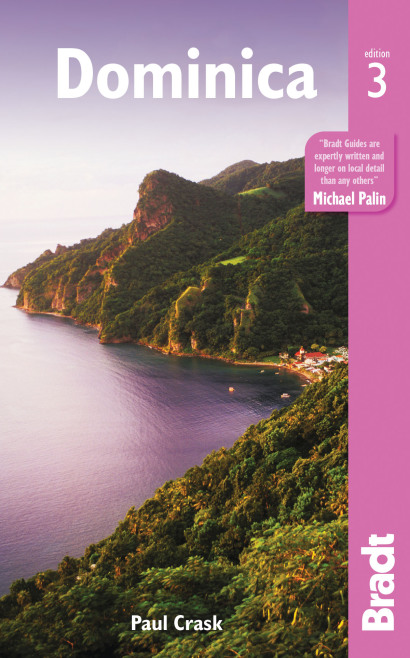With its swathes of undisturbed rainforest and clusters of active volcanoes, Dominica is a haven of natural wonders.
A Caribbean island with a difference, it is the perfect off-the-beaten-track destination for thrill seekers and nature lovers alike. Dominica is all about life; it is raw, full-on, natural and, so far, very unspoilt. Whether hiking its waterfalls, climbing its peaks or diving its dramatic reef formations, this unique destination promises adventure at every turn.
Not only is Dominica a country with an abundance of stunning scenery and exotic wildlife, it is one of the few far-flung destinations currently on the UK travel-corridor list. And with the recent introduction of the tourist board’s new ‘Safe in Nature’ programme, the Caribbean island is now ready to welcome back international tourists safely. Seems like a no-brainer for a 2021 getaway!
Not convinced? Read on to discover more about its countless natural highlights and we’re sure you’ll be booking a flight in no time.
Morne Trois Pitons National Park
Dominica’s most well-known national park is the 7,000ha Morne Trois Pitons. With its imposing peaks, stunning valleys and picture-perfect lakes, it comes as no surprise that this varied terrain has been marked as a UNESCO World Heritage Site.
One of the park’s most impressive features is the Valley of Desolation, an active volcanic landscape of steaming gas vents, heated rivers and cascades, bubbling mud and a crust of colourful, sulphur-stained rock.
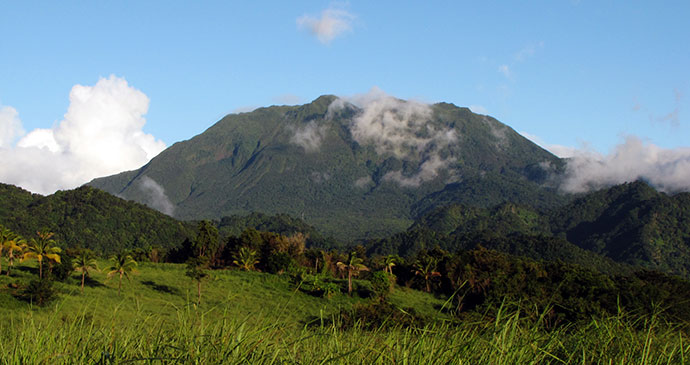
Located at the northern end of the valley is the famous Boiling Lake, a flooded fumarole some 66m in diameter. The lake’s nebulous, boiling hot waters spill over a cleft on its eastern margins and create the White River, which runs from this turbulent source down a deep valley beneath the Grand Soufriere Hills, passing over several waterfalls until it joins the Pointe Mulâtre River and, finally, the Atlantic Ocean.
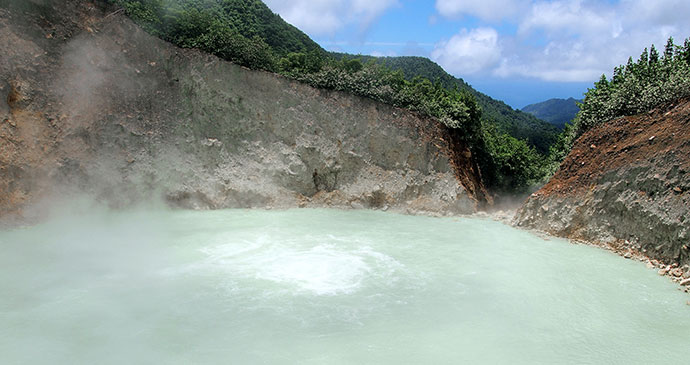
From organised birdwatching tours that provide ample opportunity for views of the park’s extensive birdlife, to an array of hiking trails suited to all abilities, the list of things to do at Morne Trois Pitons National Park is never-ending.
Ti Tou Gorge
Located between Freshwater Lake and Trafalgar Falls at the head of the Roseau Valley lies the Ti Tou Gorge, one of the set locations for the film Pirates of the Caribbean.
Situated close to the village of Laudat, near the start of the main Boiling Lake Trail, a short section of this gorge is accessible to swimmers. Through the narrow cleft in the rock it is possible to swim through the deep, cold water to reach a small waterfall. The name ‘Ti Tou’ is Creole for ‘small throat’, a perfect description of the narrow rock funnel through which the river runs from the waterfall to emerge at a small, manmade pool.
A swimming experience like no other, this adventurous dip into Dominica’s natural landscape is a must for thrill-seekers and nature-lovers alike.
The Central Forest Reserve
Established in 1952, the 410ha Central Forest Reserve is Dominica’s oldest. As the name suggests, it is located centrally, between the Morne Trois Pitons National Park and the Northern Forest Reserve.
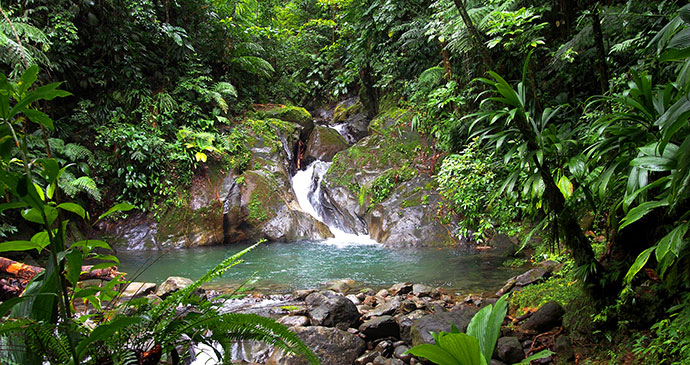
It has a rich biodiversity and consists of dense tropical rainforest, rivers, streams and waterfalls. It also provides a habitat for free-roaming fauna such as the agouti, and birds such as the endemic jaco parrot (Amazonia arausiaca). The gommier trees that grow in abundance in this dense forest have traditionally been used by the Kalinago for canoe building.
For an uninterrupted moment of serenity, look out for the Charles Warner ‘Secret Pool’. This idyllic, off-the-beaten-track location is the perfect place to soak up the forest’s scenery in peace.
Soufriere Sulphur Springs
Situated at the junction of the seaside village of Soufriere are the Soufriere Sulphur Springs.
Consisting of a large sulphur pool, three smaller (often less-populated) pools to the right and a trail that takes you to scarred areas of hillside where volcanic activity creates steaming, pungent deposits of sulphur, the Soufriere Springs offers a unique alternative to the hotel pool.
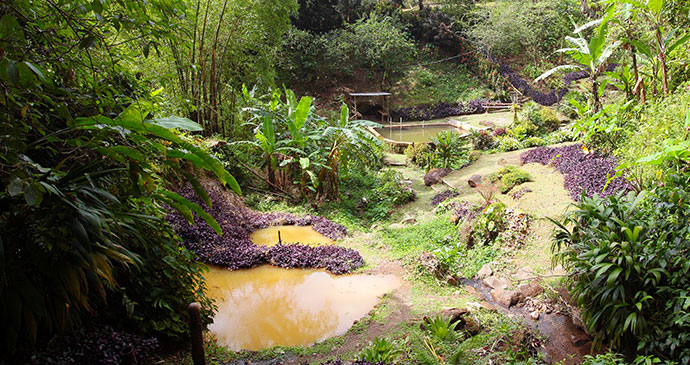
While more recently admission has been regulated with visitors having to purchase a pass to enter, the stunning natural beauty of the area remains largely untouched and bathing in its mineral-rich waters promises a rejuvenating experience for all who visit.
Dernier Falls
Dernier Falls is an interesting waterfall within a circular cavern in a deep river valley to the south of Grand Fond.
The trail down to the river is short but steep – it takes about 45 minutes each way. While the hike is not an easy one (some of the steps have been eroded and the ground tends to be slippy), this shouldn’t put you off – it’s worth the effort. Just take your time going down, stick to the main track and ignore any narrow spurs heading off into farmers’ fields at the top.
The stunning cascading waters found inside the cavern at the bottom are the perfect reward for your sweaty climb.
Cabrits National Park
The 525ha Cabrits National Park was established in 1986. The twin peaks of the Cabrits are thought to have been formed from the same volcano that collapsed and eroded over time. The name ‘Cabrits’ is derived from the French word cabri, meaning ‘young goat’. It is said goats were brought here for food and allowed to roam freely around the headland.
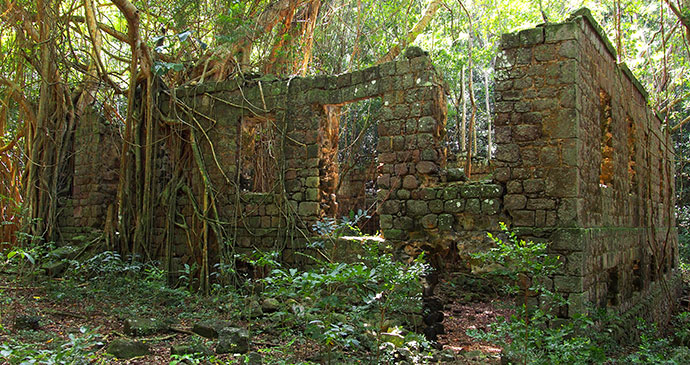
The terrain here is remarkably varied. While typically regarded as a dry coastal woodland (home to the silk cotton tree and naked Indian tree), the park is connected to the mainland by Dominica’s largest wetland, the Cabrits Swamp. As a result, it is home to some 421ha of marine environment, offering an abundance of wildlife spotting opportunities.
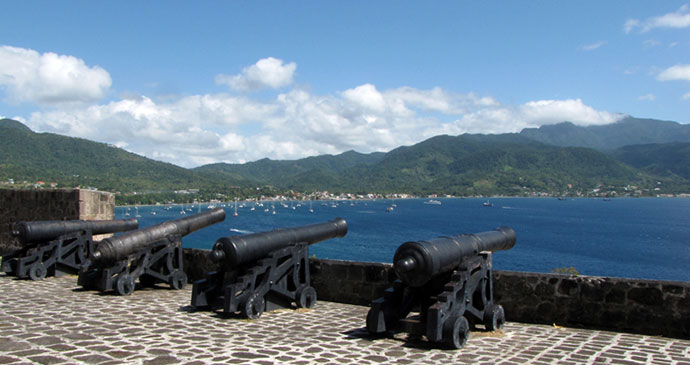
Aside from indulging in a lazy woodland stroll around the park’s perimeters, you can also take in a little history at the Fort Shirley Garrison, the semi-restored ruins of an 18th-century British military outpost and contained within the park itself.
